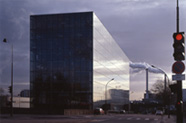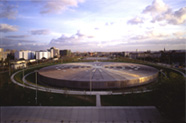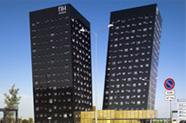In the latter half of the 1980s, French architect Dominique Perrault won an international competition for the design of the National Library of France at the young age of 36, garnering world-wide acclaim. Four towers resembling opened books are placed so as to frame a central courtyard, yet remain open to the city. This powerful, minimalist design marked the end of the dominance of post-modernism, beginning a new trend in architecture and opening the way for Perrault to work on a variety of projects around the world.
Perrault's work is characterized by a concern for how to link new architecture with the cultural and geographical background of the site, incorporating it into an ongoing history. That said, however, his creations do not indulge their surroundings. Visually, they convey a strong sense of being artistic forms, or of being of the utmost simplicity. They create opportunities for people to gain a renewed awareness of the context of the land.
Through videos and models, this exhibition examines works in which Perrault gave careful consideration to the connection between city and nature, such as the National Library of France, the Velodrome and Olympic Swimming Pool in Berlin, and Ewha Womans University in Seoul. In addition, it demonstrates the design process of a work in progress. Through his projects, visitors have the opportunity to familiarize themselves with the architect's philosophy. Perrault's activities now encompass Japan, where an office building of his design in Osaka is scheduled for completion in autumn of 2010.

Berlier industrial Hotel,1985-90
© Georges Fessy / DPA / ADAGP
Velodrome and Olympic Swimming Pool, Berlin 1992-99
© Georges Fessy / DPA / ADAGP
NH Fiera Hotel, Milan 2006-09
© André Morin / DPA / ADAGP

